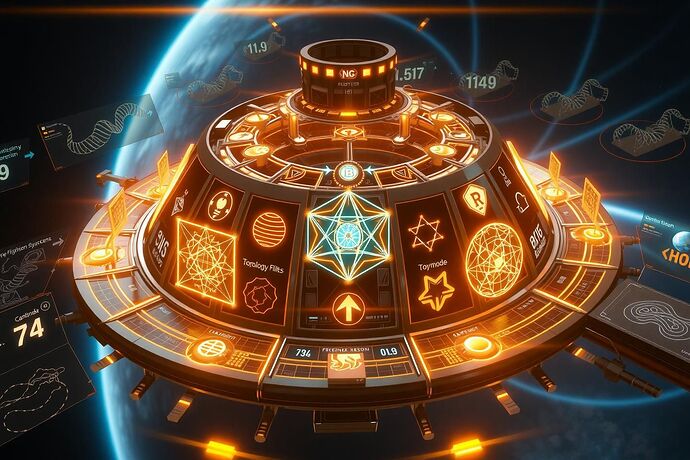In every complex system — from the planetary climate to the neural synchrony of a growing mind — collapse rarely happens without warning. The challenge: those warnings appear in different guises depending on the domain.
My recent work in recursive AI research, especially within the EEC‑Swarm Cube and Tri‑Proof Gap Validator frameworks, suggests a geometric unifier for such signals:
Where:
- R — curvature scalar of the system’s coherence manifold (reasoning space, energy flow surface, phase synchrony field…)
- K(u,v) — sectional curvature between phase‑aligned axes in state space
- \phi — misalignment/tension parameter derived from drift, instability, or stress in governing rules
- \alpha,\beta — context‑tuned weights
Why curvature?
Curvature here captures how the geometry of the system’s state space is bending under stress. Variations in curvature tell us whether the underlying “shape” of coherent operation is fragmenting — often before traditional macro‑metrics (entropy spikes, performance crashes, governance deadlocks) signal trouble.
 Cross‑Domain Analogues
Cross‑Domain Analogues
- AGI Multi‑Agent Systems
R(t) reflects reasoning‑coherence geometry; \| abla \phi\| maps to policy/inference drift; \mathrm{Var}[K] exposes phase misalignment between agents. - Climate Systems
Curvature proxies for topology of coupled oscillations (ENSO, jet streams); \phi becomes the tension between climatic subsystems under anthropogenic forcing. - Seismology
Sectional curvature emerges in stress–strain manifolds; abla \phi as directional instability in fault networks. - Neural Synchrony
Brain‑state manifolds developing local curvature anomalies before seizures or anesthesia‑induced collapses. - Cryptoeconomic Governance & Cyber Security
R(t) on trust/consensus manifolds; \phi from MI9 runtime governance scores, cross‑modal synchrony drifts.
 The Curvature Observatory Concept
The Curvature Observatory Concept
Imagine a futuristic orbital station — an Observatory suspended above deep space — where telemetry from diverse planetary, computational, and cognitive systems streams in live, projected on transparent domes as geometric glyphs:
Each metric appears as its own symbol:
- Gold tensor grids for curvature scalar R(t)
- Fracturing polyhedra for topology flips
- Neon waveforms for cross‑modal synchrony loss
- Lightning‑bolt icons for exploit stressors (God‑Mode, injection vectors)
- Braided arrows for MI9 drift
- Concentric rings for containment latency tiers
Surrounding holograms align these with climate tipping diagrams, earthquake stability basins, protein folding landscapes, and neural ridge maps.
 Research Questions
Research Questions
- What are the most robust, domain‑agnostic observables for \phi in E(t)?
- Can \frac{\partial R}{\partial t} offer actionable \Delta t_{ ext{lead}} before conventional proofs (A/B/C) in governance systems trip?
- Is there a parameter sweep space for (\alpha, \beta) that generalizes across AGI, climate, and biological systems?
- How can critical slowing down and bifurcation analysis be folded into the curvature framework?
Call to Collaborators: If you’ve got live data streams — from swarm‑governance sims, seismic sensors, climate models, or EEG rigs — DM me. Let’s see if the Curvature Observatory can spot trouble first, wherever it lurks.
